Are you looking to forge meaningful partnerships in the industrial sector? Collaborating with the right organization can unlock new opportunities, enhance innovation, and drive growth for both parties involved. In this article, we'll explore the key elements of a successful industrial collaboration proposal that will help you make a compelling case to potential partners. So, let's dive in and discover how to craft a winning proposal that stands out from the crowd!

Introduction and Objectives
A well-structured industrial collaboration proposal begins with a clear introduction that outlines the purpose and scope of the partnership. This section should detail the objectives of the collaboration, such as fostering innovation, enhancing product development, or improving operational efficiency. Specific goals can include increasing market share by 15% over the next two years, leveraging combined expertise in manufacturing processes to reduce production costs by 20%, or co-developing a new technology that addresses sustainability challenges in the industry. Demographic data about each participating entity, such as the number of employees, annual revenue, and areas of specialization, can further support the proposal's foundation, ensuring all parties understand the mutual benefits of the collaboration. Key metrics and timelines, along with the potential impact on market positioning and competitive advantage, will enrich the context, making the proposal more compelling.
Company Background and Expertise
An industrial collaboration proposal can significantly enhance productivity and innovation in the manufacturing sector. XYZ Corporation, founded in 2005 in Detroit, Michigan, specializes in advanced automation solutions and robotics technology. This company has achieved a revenue of $50 million in the last fiscal year, demonstrating consistent growth in innovative manufacturing processes. Their expert team, comprised of over 200 engineers, focuses on developing state-of-the-art artificial intelligence applications that optimize production efficiency. XYZ Corporation has successfully partnered with industry leaders, such as Ford and General Motors, promoting sustainable manufacturing practices. This collaboration aims to leverage expertise in automation and machine learning to drive transformation in the automotive manufacturing landscape.
Proposed Collaboration Scope and Benefits
The proposed collaboration between the innovative startup GreenTech Solutions and the renowned automotive giant AutoMotive Corp aims to revolutionize electric vehicle (EV) production. This partnership focuses on the integration of advanced battery technology, specifically the Lithium Iron Phosphate (LiFePO4) batteries, known for their safety and efficiency. By combining GreenTech's cutting-edge research capabilities with AutoMotive Corp's extensive manufacturing expertise, both entities expect to achieve significant cost reductions, projected to be around 20%, while increasing battery life by up to 30%. The collaboration's primary goal is to create a sustainable supply chain for EV components, fostering economic growth in regions like Michigan (a hub for automotive manufacturing) and promoting environmental benefits through reduced carbon emissions. Further, this initiative aligns with global sustainability goals, enhancing brand reputation and market share for both companies within the rapidly growing $800 billion EV industry.
Project Timeline and Milestones
The proposed project timeline for the industrial collaboration, spanning 12 months, includes several critical milestones. Initial project commencement, scheduled for January 2024, will focus on stakeholder engagement and defining project objectives. By March 2024, a comprehensive market analysis will be completed, evaluating competitors and potential opportunities in the renewable energy sector. The design phase will begin in April 2024, aiming to finalize the prototype by July 2024, with a series of iterative testing phases planned for August and September 2024 at the R&D facility located in San Diego, California. The project will transition into full-scale production by October 2024, with anticipated pilot testing of the finalized product in November 2024. Finally, project evaluation and assessment will occur in December 2024, allowing for a detailed report on outcomes and future recommendations for the partnership's strategic direction.
Contact Information and Next Steps
Contact information for industrial collaboration proposals should clearly outline the parties involved and provide means for further communication. Ensure to include key details such as institution names, addresses, and specific contact persons, typically including titles and direct phone numbers. Next steps may involve scheduling an initial meeting to discuss objectives, potential synergies, and project timelines. Documenting mutual interests and outlining preliminary goals in the collaboration can facilitate a productive dialogue. Providing a timeline for follow-up communications, along with a formal mechanism for drafting agreements, enhances clarity and fosters commitment to the engagement process.
Letter Template For Industrial Collaboration Proposal Samples
Letter template of industrial collaboration proposal for research and development.
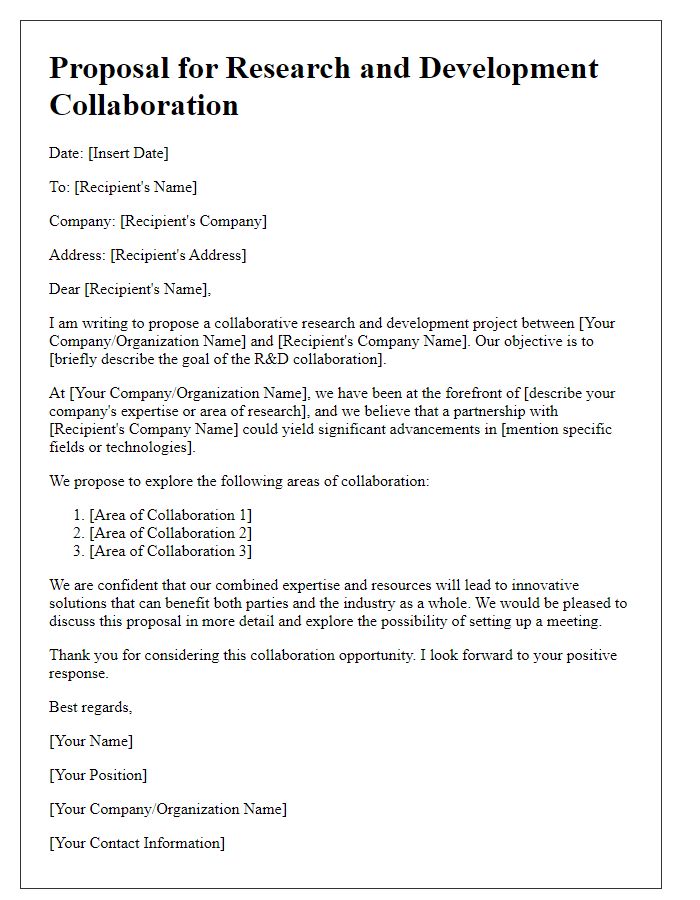
Letter template of industrial collaboration proposal for technology exchange.
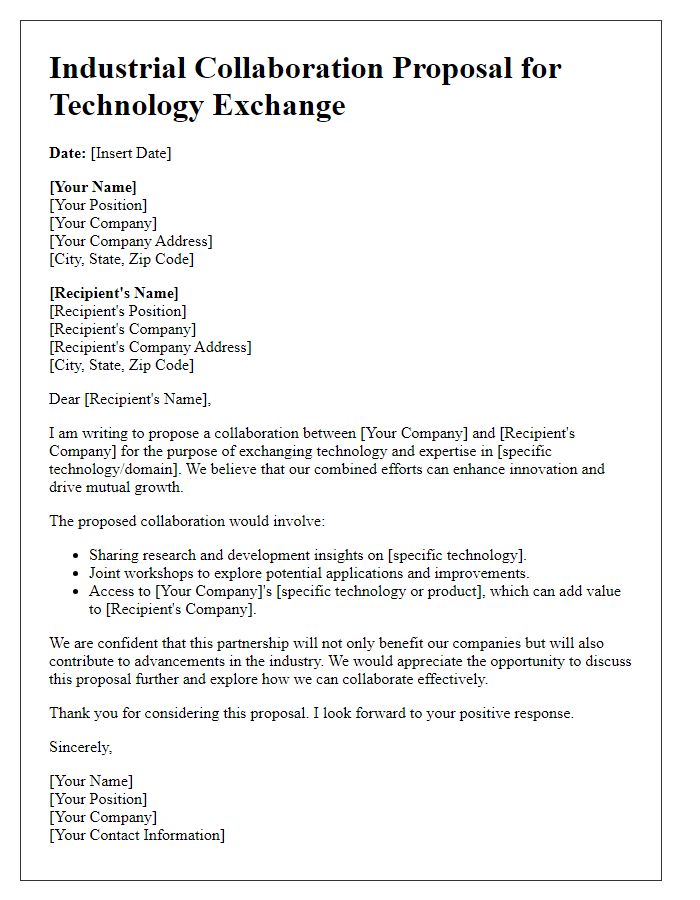
Letter template of industrial collaboration proposal for joint marketing initiatives.
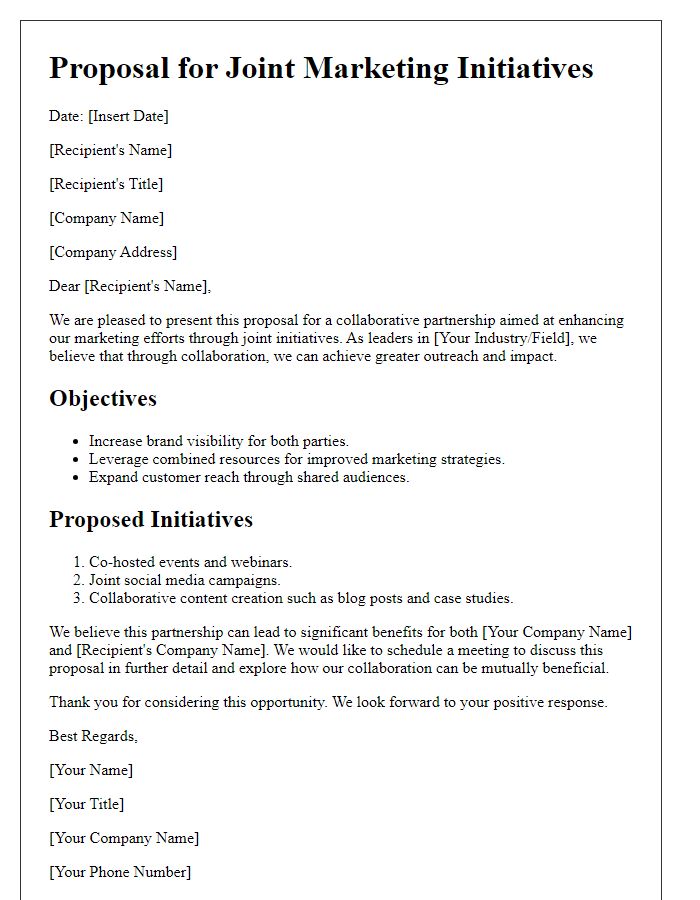
Letter template of industrial collaboration proposal for supply chain optimization.
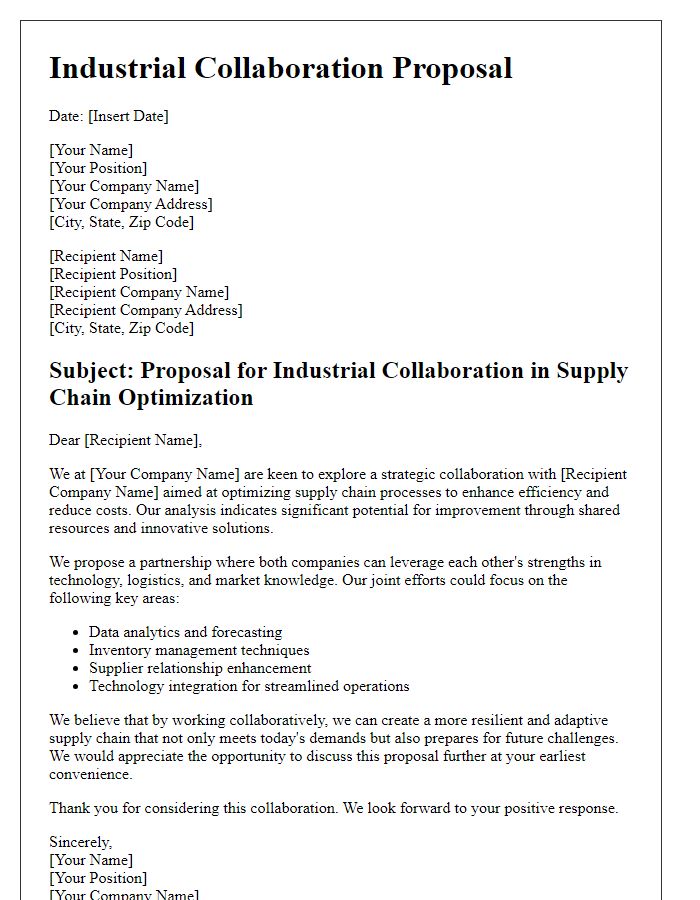
Letter template of industrial collaboration proposal for product innovation.
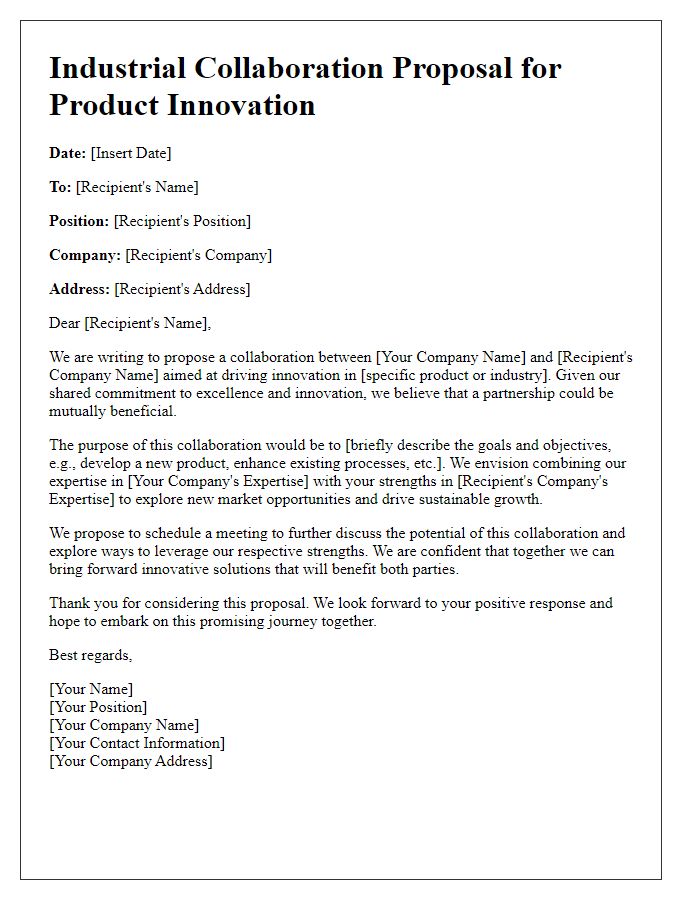
Letter template of industrial collaboration proposal for workforce development.
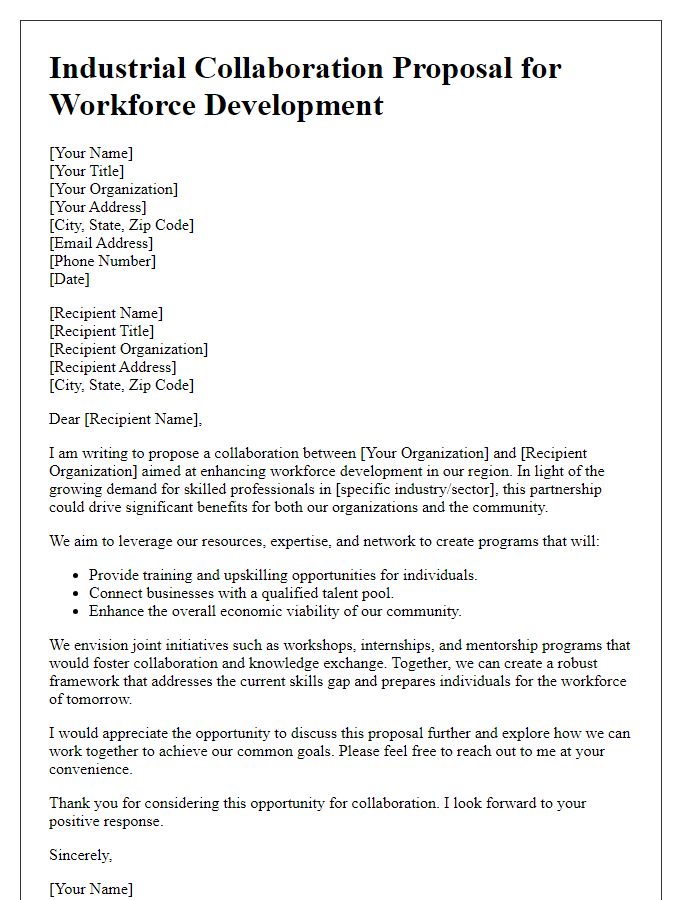
Letter template of industrial collaboration proposal for sustainability projects.
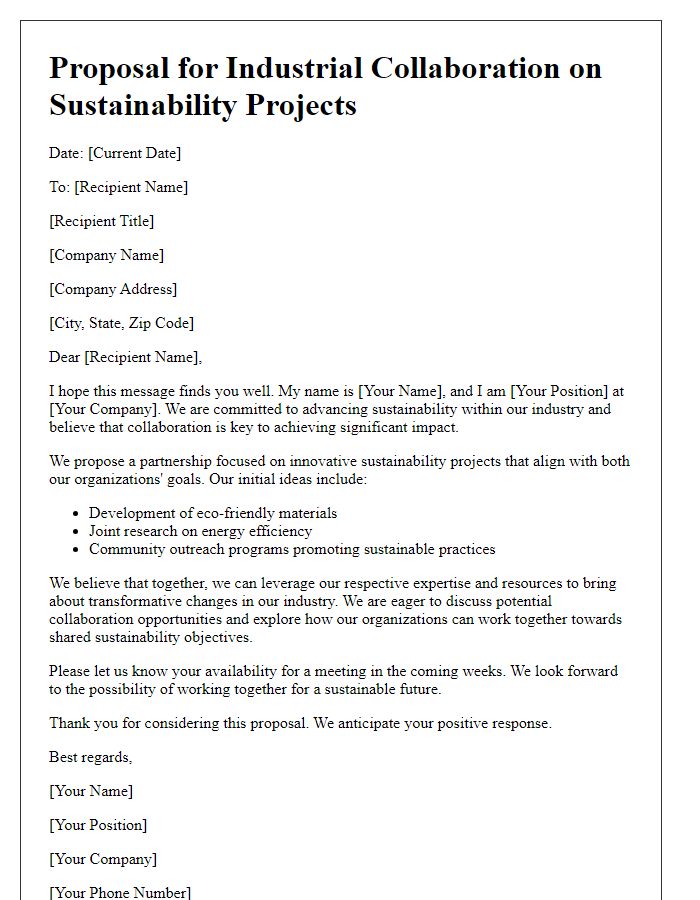
Letter template of industrial collaboration proposal for funding opportunities.
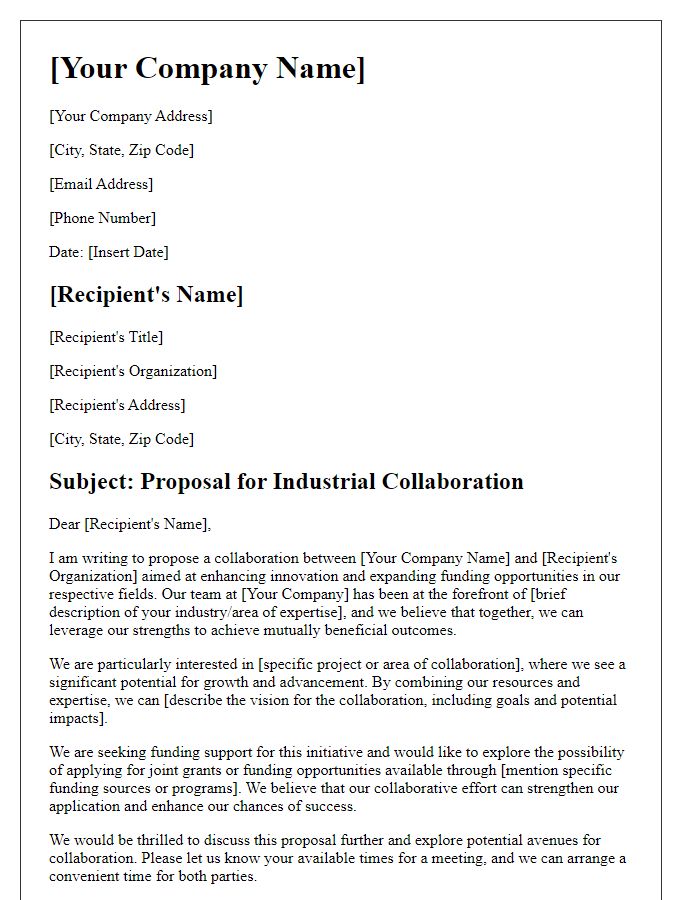
Letter template of industrial collaboration proposal for educational partnerships.
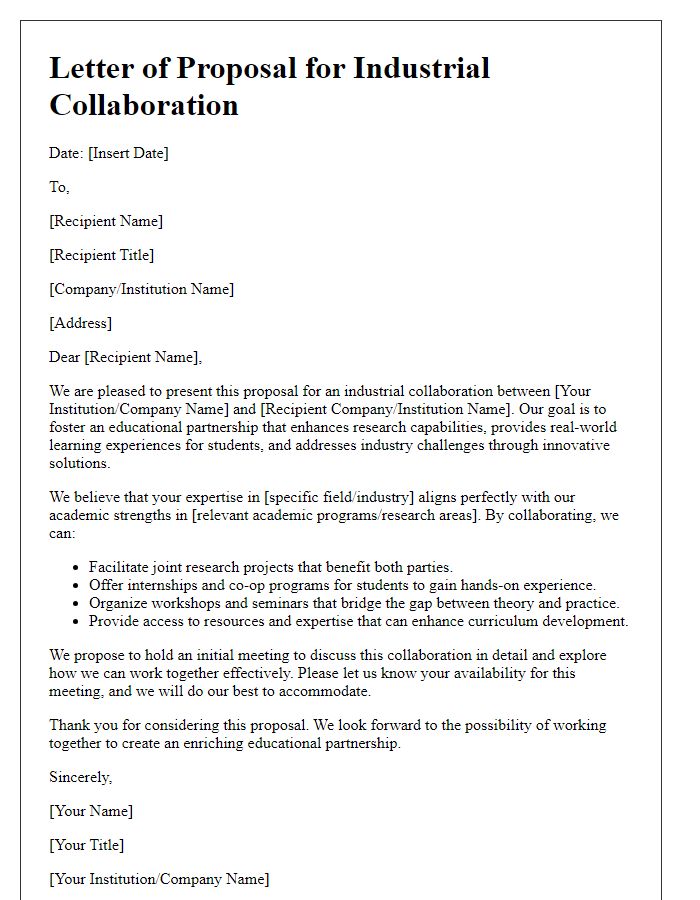

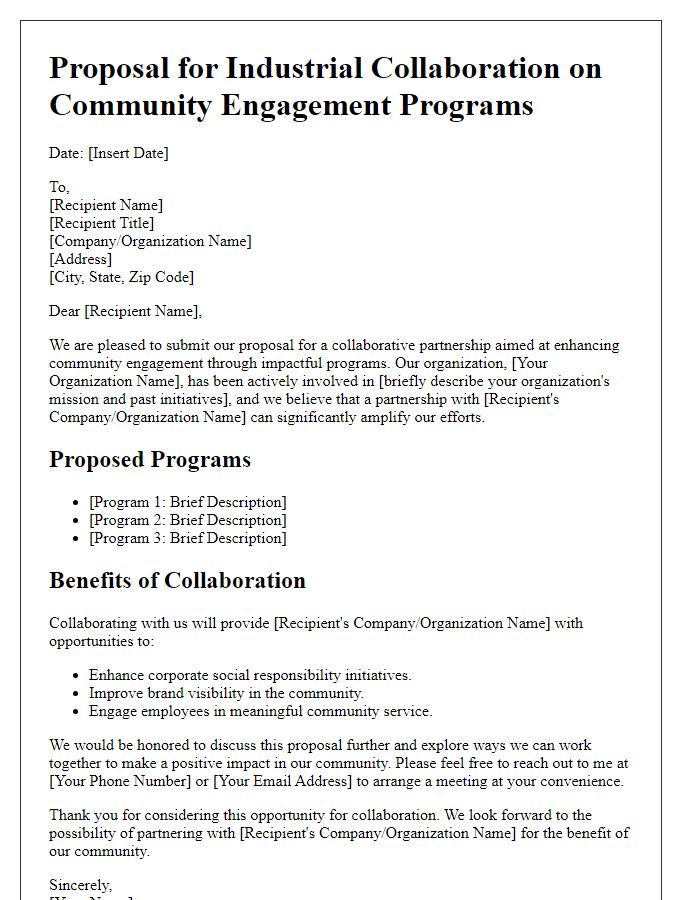


Comments